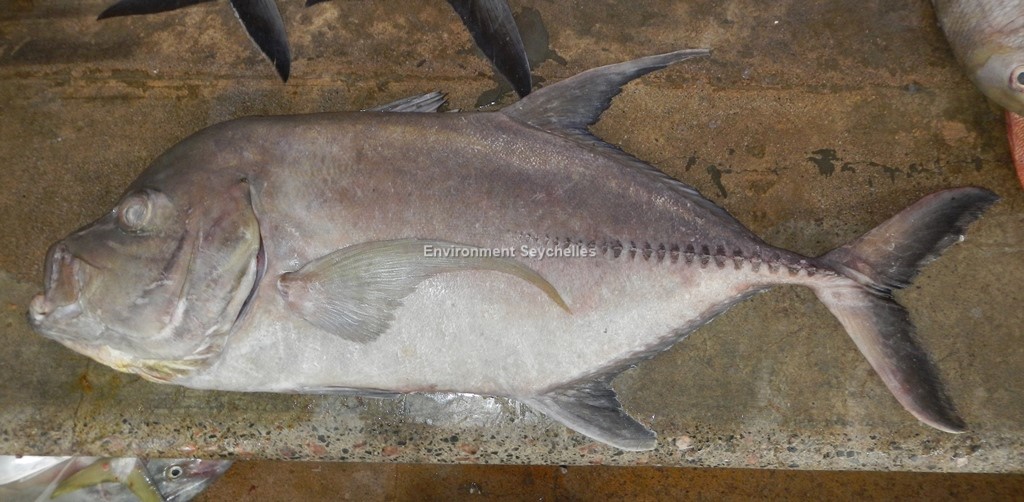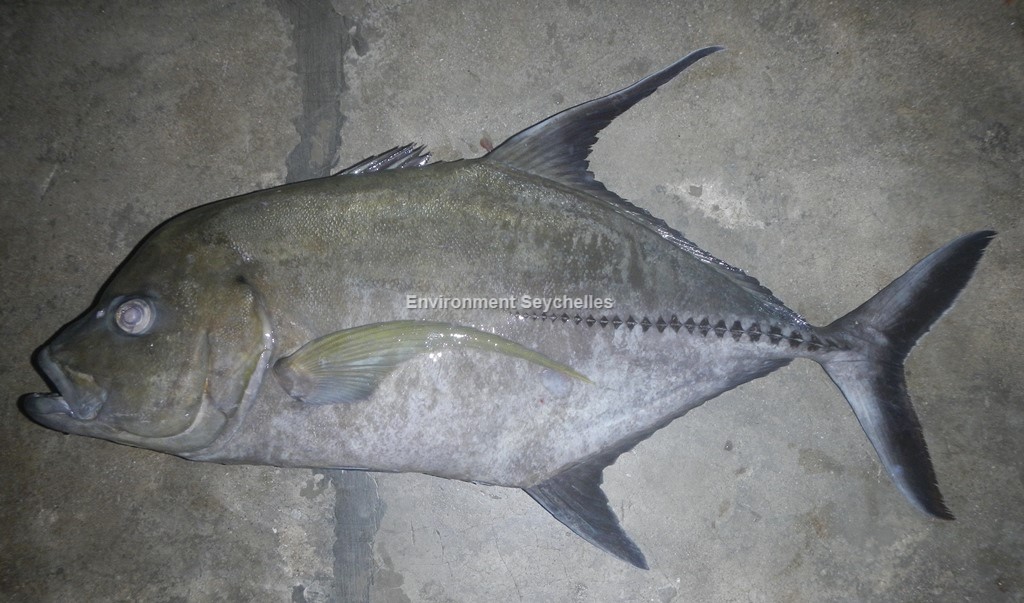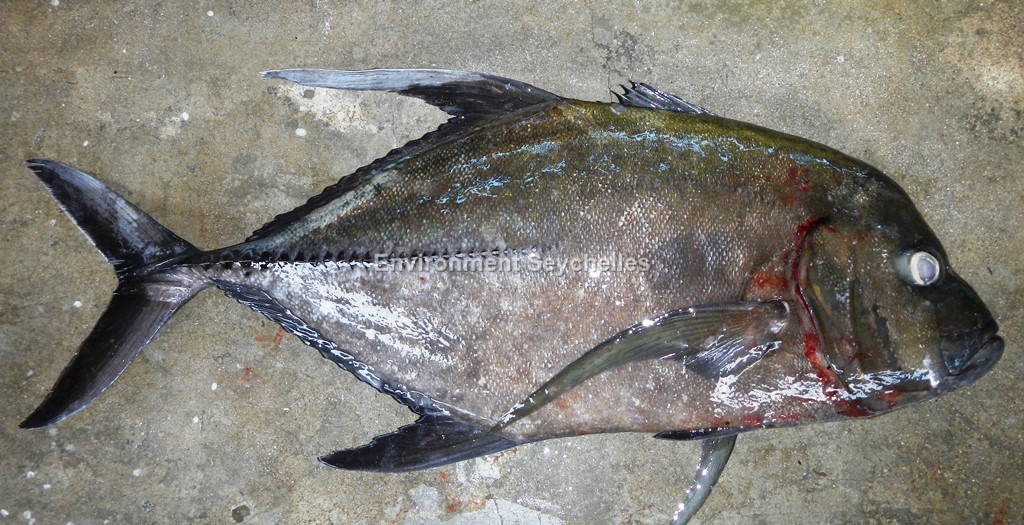Description:
Dorsal spines: 9; Dorsal rays: 20-22; Anal spines: 3; Anal rays: 16-19.
Body oblong, compressed. Dorsal profile strongly convex anteriorly, ventral profile only slightly convex. Profile of head relatively steep and angular. Adipose eyelid
moderately developed extends onto eye to rear half of pupil. Upper jaw with outer row of strong canines widely spaced in adults, and an inner band of small villiform
teeth, lower jaw with a single row of strong conical teeth widely spaced in adults. Straight part of lateral line with 26 to 32 distinctive strong scutes Breast
completely scaly. Dorsal and anal fin lobes extended.
Colour. Brownish through grey to slate grey or blackish with a greenish dorsal tinge. Opercle upper margin often with a small black spot. Lateral line scutes dark brown
to black. Median fins dark brown to black. Other fins grey to brown.
Size:
Maturity: Lm unknown. Range unknown. Max Length: 100cm TL. Commonly 70cm TL.
Habitat and Ecology:
An oceanic and insular species. Usually inhabits deeper reefs in clear waters, and drop-offs on outer reefs (depth 12-354m, usually 25-65m). Not commonly found in shallow
banks. A large predator on outer reefs feeds primarily on fishes. Occasionally forms schools. Eggs are pelagic. There is little information available on early life history
characteristics.
Fishery Status:
This species is not protected or subject to fishery regulations. It is caught in the hand line fishery where it is an occasional and not typically numerous component of
the catch.
Notes:
References:
Bray, D.J. (2017). Caranx lugubris in Fishes of Australia, http://fishesofaustralia.net.au/home/species/1651 (19/05/19)
Fischer, W. & G. Bianchi (eds), (1984). FAO species identification sheets for fishery purposes. Western Indian Ocean; (Fishing Area 51). Prepared and printed with the
support of the Danish International Development Agency (DANIDA). Rome, Food nd Agricultural Organization of the United Nations, vols 1-6: pag. var.
Froese, R. & D. Pauly. Eds. (2019). FishBase. https://www.fishbase.se/summary/Caranx-lugubris (18/05/19).
Smith-Vaniz, W.F. et al. (2015). Caranx lugubris (errata version 2017). The IUCN Red List 2015: http://dx.doi.org/10.2305/IUCN.UK.2015-4.RLTS.T16431757A16509762.en. (18/05/19)
Citation:
Nevill, J.E.G. (2019). Caranx lugubris, Black jack. Seychelles Seatizens. www.seatizens.sc. https://seatizens.sc/species/caranx-lugubris-poey-1860/ (edited 23/06/22).




There are no comments